

|
|
|
||||||||
|
|
|||||||||
| Home | Forums | Register | Gallery | FAQ | Calendar |
| Retailers | Community | News/Info | International Retailers | IRC | Today's Posts |
 |
|
|
Thread Tools |
|
|
#1 |
|
Salomon Quest 4D GTX Forces
SALOMON Quest 4D GTX/Forces Forces series available in Asphalt (black) and Navajo (tan) and non GTX versions
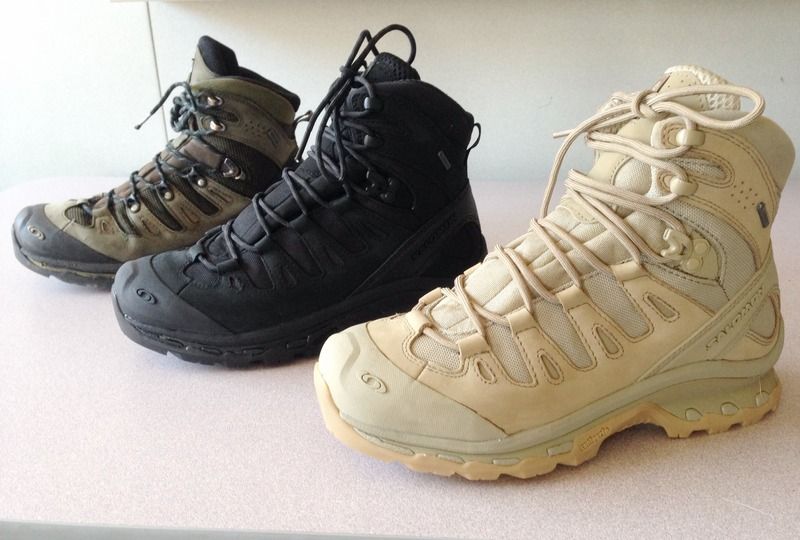 Retail: $219.95 - $239.95 Background: Whether you are looking for a pair of good hiking boots for the season or gearing up for a military deployment overseas you will need a good pair of boots. As any of our readers who have had to wear the standard government issue boot you are given when you go through basic will know, good foot wear can make a world of difference and as soon as you are able to upgrade your kit that is the first thing to drop some coin on. For my first boot I opted for the Bates Ultra-Lights which were a dramatic change in weight and comfort from the Mk IV boots we had been issued. Since then I have transitioned to a backpacker’s boot which was more oriented toward long treks while carrying a load of 45lb-65lbs over rough and variable terrain. I went through a few different brands before I tried on a pair of the Salomon Quest 4D GTX. (I currently use two boots; one is the La Sportiva mountaineering boot and the Salomon Quest 4D GTX) The Quest 4D GTX was voted one of the top 10 best boots by SEAL Grinder PT, are standard issue for US Army Rangers, and are widely used by the Green Berets and a handful of others within the special forces community. While Asolo boots and the Merrel Sawtooths remain equally popular among the SEALs, Mark Owen (aka. Matt Bissonette, one of the 2 men credited with killing Osama Bin Laden) documented in his book ‘No Easy Day’ that on the night of the raid on OBL’s Abbottabad compound; he wore Salomon Quest boots which he chose specifically for the great ankle support they provide. Civi-side, the Salomon Quest 4D GTX boots have been one of the most popular hiking boots for many years, but they have not been available in specifically 'tactical' colors until early 2015 when they released the “Forces Edition” . Previously the closest colors they had that was even remotely tactical were their earthy brown and the green, the latter of which are most often used by the Rangers. The Quest 4D GTX Forces edition comes in two colors; Asphalt (black) and Navajo (tan). Like all the other Quest 4D GTX models, they are designed as a 3 season boot that provides the wearer the durability of a hiking boot, the comfort and weightlessness of their trail-runners and yet it is still semi ridged allowing the use of crampons. Asphalt  Navajo 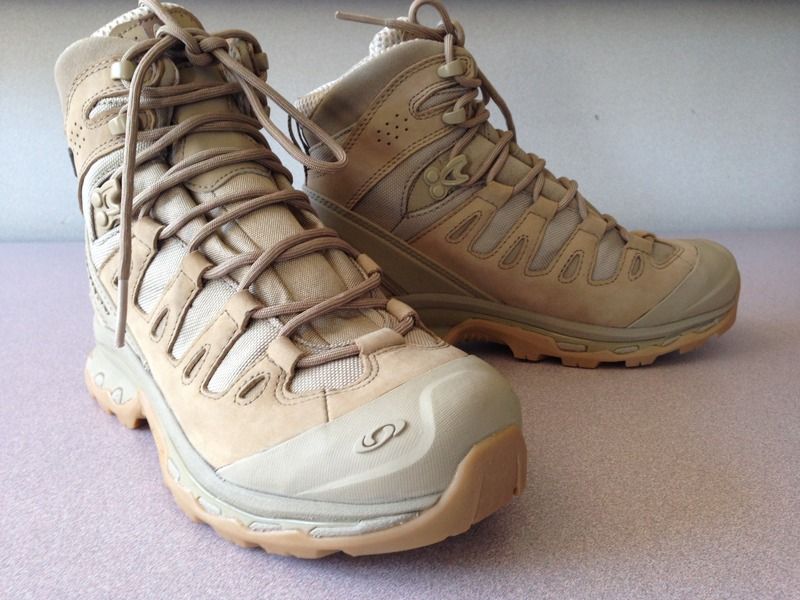 Manufacturer Specs: • Waterproof bootie construction with GORE-TEX® Performance Comfort • Protective rubber toe & heel caps • Gusseted tongue • Textile/Waterproof Split Suede Leather Upper • Molded EVA Midsole • Non marking Contagrip® Outsole • Ortholite® Sockliner • 4D Advanced Chassis • 7.5" high measured from floor to top of boot (size 8"). • Weight (size 8, per pair) – 1.4 lb (655g) Feature Highlights: •The Quest boot uppers are made up of a combination of nylon and split suede leather. 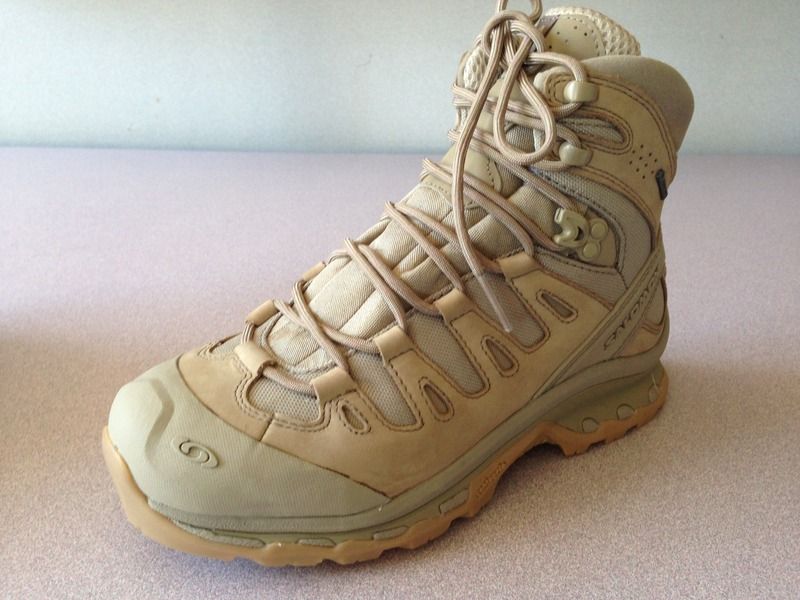 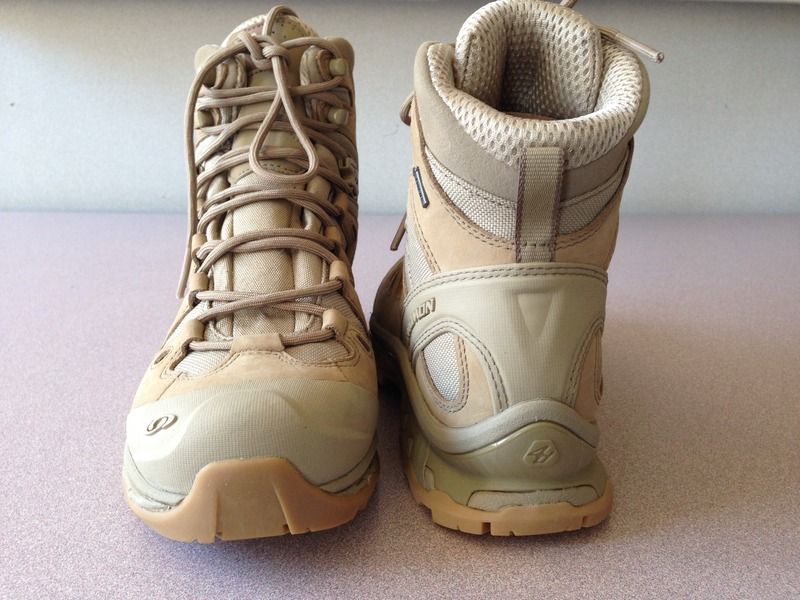 •The boot design features a rubber toe cap which provides ample protection from stubbed toes; bumps and other frontal foot impact.  •A plastic heel guard and a midsole tread design which is smoothed edged for fast roping. There is also a rubber 'heel reinforcement that acts as somewhat of a rear bumper guard. I will note that there's a 1.5” pull tab at the back of the collar made out of soft webbing though I have personally never found any practical use for this feature. 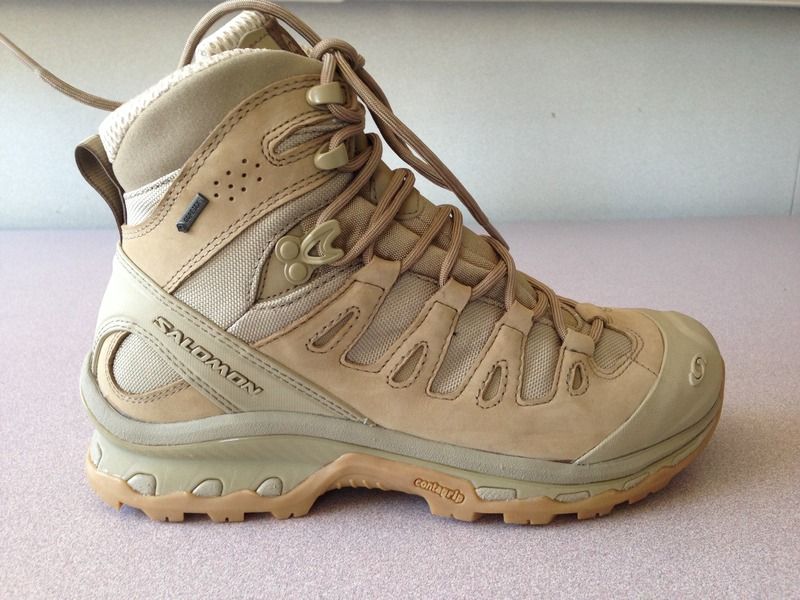 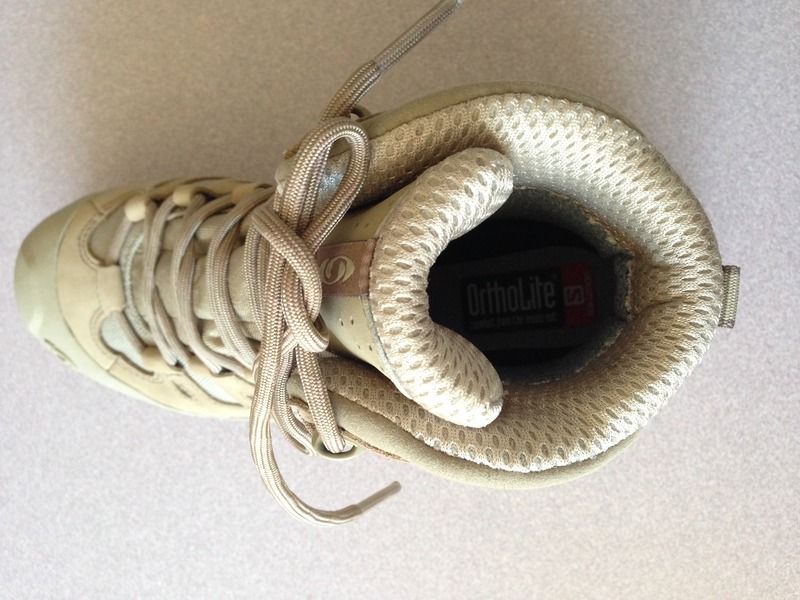 •The mesh-lined ankle collar dips down slightly at the rear of the ankle ergonomically shaped to minimize friction with the wearer’s ankle. •Just as with all previous versions of the Quest, it features a wicking polyester lining to absorb and disperse excess moisture which can build from sweating under humid climates and long hikes. •Each boot is lined with a GORE-TEX® Extended Comfort membrane for waterproofing and added comfort. •The tongue is made out of nylon, with a leather reinforcement on the upper half and is padded to absorb some of the lace pressure. It's gusseted up to the bottom of the 2nd hook to keep water and dirt out of the boot, though it will not prevent water from entering the boot if submerged above the collar line (i suggest Gaiters, if you foresee yourself possibly submerging your ankle higher than the top of the boot line). 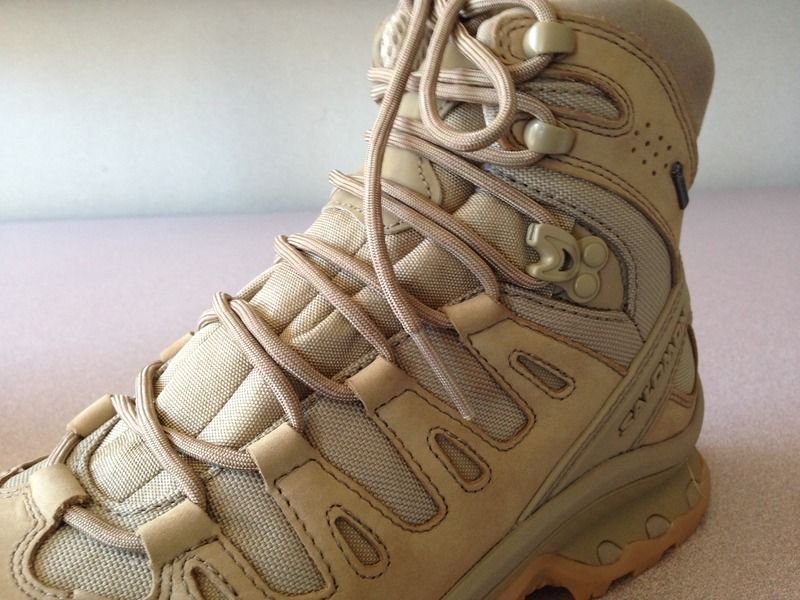 •The third lace hook from the top, acts as a lace lock, and locks the lace in place allowing you vary the lace tension between the top and bottom. When locked in (in the original design), the laces can be pulled tighter but will not release on their own. To release the lace lock, simply unhook the laces. 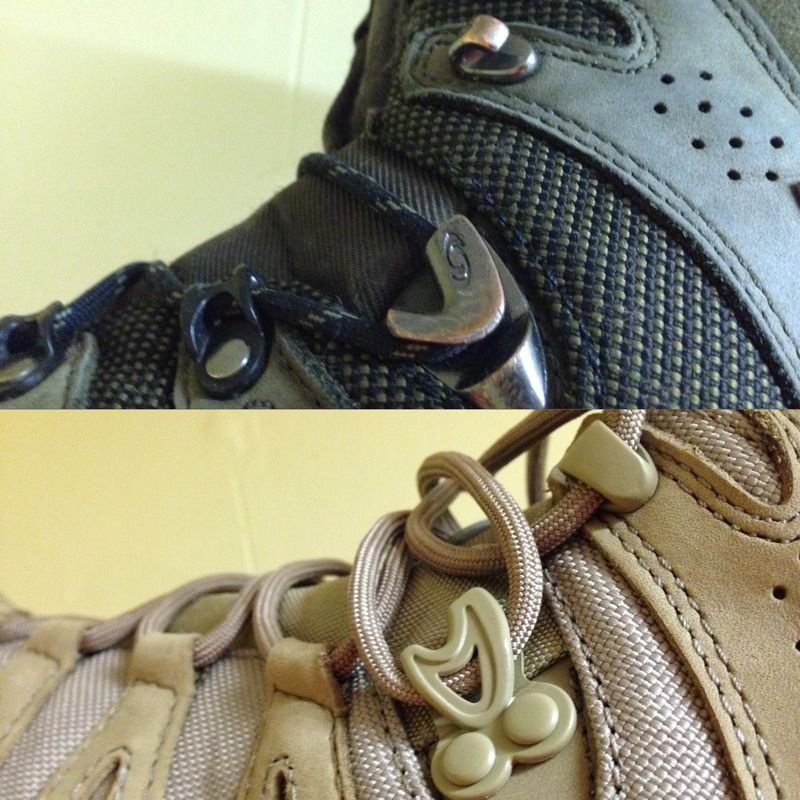 There is a slight difference in the lace hook/eyelet and lace lock design between the standard Quests and the Forces versions. As you will note in the side by side comparison (see photos); the brass lace hooks have been omitted in favor of a more simplified design which extends the leather ribs into loops for the laces to pass through. The lace lock design has also undergone a slight make over, (apart from the obvious color match) the lace lock is now a closed off loop instead of the "hook" design. The lace lock essentially functions the same way though you can no longer just pull the laces out. I learned that Salomon chose to eliminate the aluminum/brass eyelets and open hooks to accomodate use in airborne operations, eliminating the need to tape up any lace hooks. With the new lace lock design the wearer can now just pull up on the laces to cinch the boot and pull them forward to "lock" them in place without having fumble around and find the hooks. I personally prefer the old design. I find that the boot is now slightly harder to re-lace; when threading laces through the leather eyelets, one often has to wiggle the lace ends a bit to get them through the leather loops. Because the laces are stuck in the lace lock eyelet, I also found it slightly harder to cinch the lower part of the boot as smoothly and as quickly as with the original hook design. I guess it may just come down to personal preference and mission requirements. 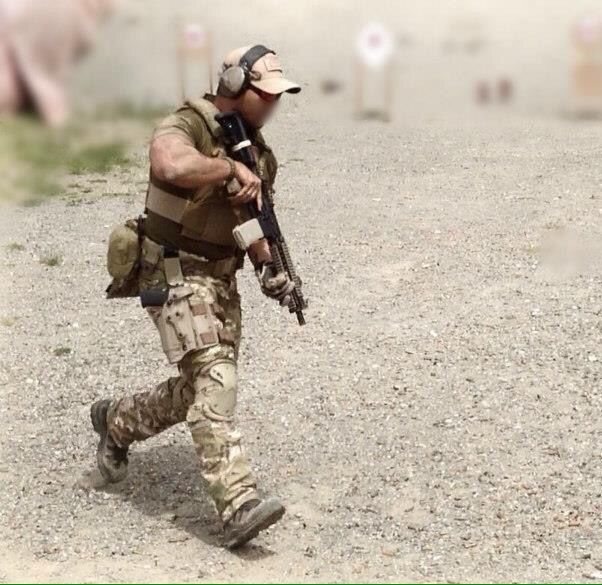 .The Quest design is built on Salomon’s trail running technology which becomes very apparent if you find yourself in sprint, it is easy to forget that you are wearing hiking boots and not running shoes. •Sizing and fit I have size 9.5 feet (measured), and depending on the boot, wear 8.5 or 9 however in the Quests I wear a size 8. My forefoot is somewhat on the wider side and I often have to go a size larger to compensate for this. I found the forefoot area in the Quests much roomier than other boots, which allows room for the foot to expand as they do from being on your feet on long treks. I also do not find my toes excessively pushing against the toe end of the boot when descending, i you find that they do, you may want to consider switching to a half size up. The Quest has a visibly wider fit up front than in the back and arc which suits my foot shape perfectly. The Quest provides better arch support than other boots I have tried and didn't require any break-in period. The light cushioning at the heel and ankle makes a huge difference. 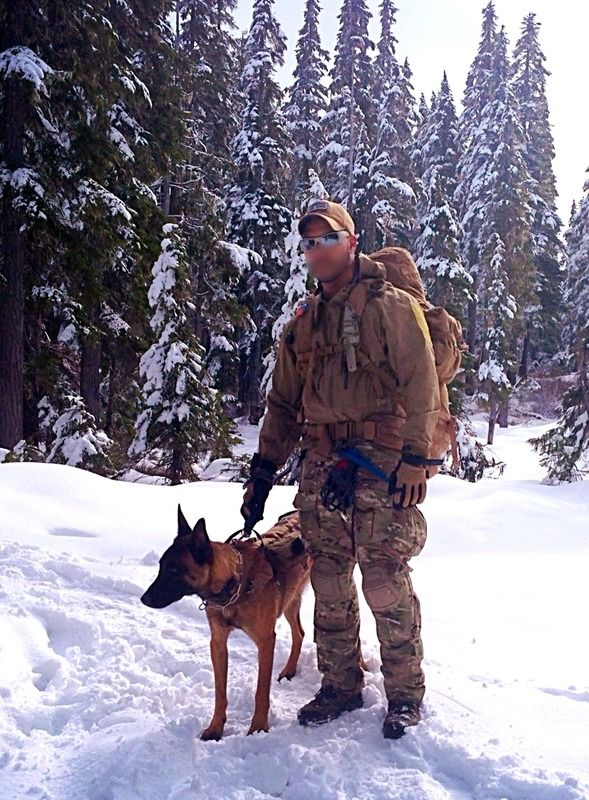 •I have personally tested the Quest GTX (Green, non-forces version) in heavy rain, deep snow, salt water submersion (gaiters were used so as to ensure no water could enter through the top of the shoe.) Over 4 years of daily wear and heavy use I experienced no wetness from external water penetrating the boot nor any moisture from sweat collecting inside the boot. Just recently however on a mountain trek, after traversing several 4-6” puddles, I noticed considerable dampness in the top, front toe area of the right boot and then shortly after, the same issue became apparent in the left boot. As always I careful to ensure that no water entered the boot through the top. Upon closer inspection it appeared that the leak originated somewhere on the top toe area, around where the leather/Goretex seam is located. I let the shoes completely dry out and retested them with the same results. I concluded that the likely culprit was a compromise in the Goretex seam tape which, while rare, can fail over time. (See warranty section below) •The Ortholite insoles have an antimicrobial treatment to help minimise odors and the dual density padding is very comfortable I have done 3+ day treks in them while carrying a 45lb-60lb load through mountainous terrain and found them to be quite sufficient though I have bit of an arch in my foot and tend to pronate when I walk so I recently swapped them out for a pair of Dr Scholl’s gel insoles with arch support which I find works really great when doing longer hikes with a load. Brand new insoles 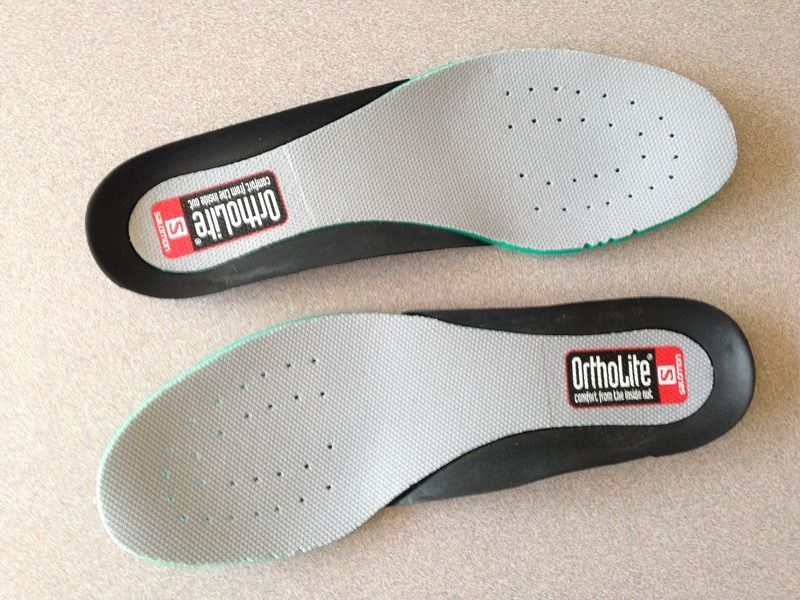 After 4 years of wear 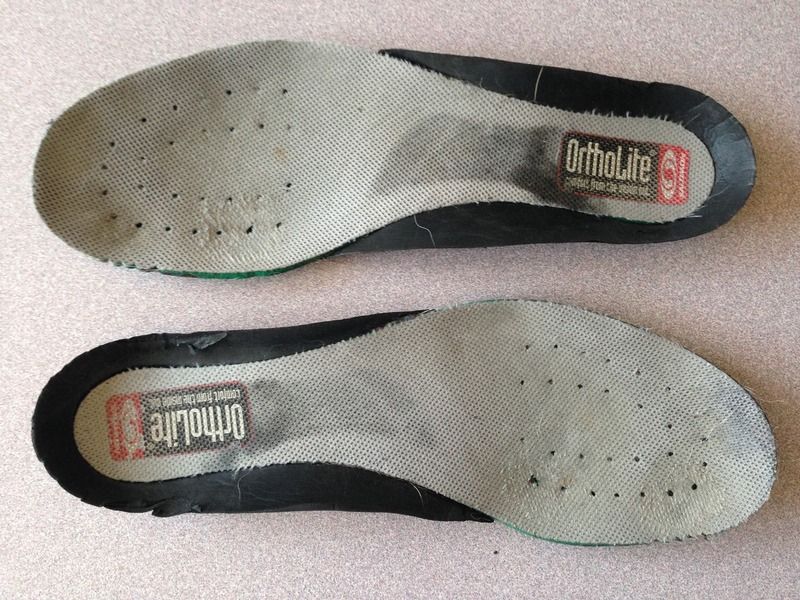 •The lightly padded upper part of the boot provides the wearer with sufficient lateral support for the ankle without restricting range of motion for climbing or descending even for someone like me who seems to be prone to rolling my ankles a lot. I found no uncomfortable points of contact or any friction against my skin but like with any hiking boot you may find the need to loosen your laces after a long trek to ensure ample blood flow to your toes. I found the soles to be very grippy even under wet conditions on smooth surfaces such as rocks or tree roots. The rubber toe caps work extremely well and found it nearly impossible to stub my toes. Warranty and Customer Support As if I needed more proof that Salomon makes some of the best gear in the biz but my latest customer service/support experience with them only serves as yet another reason why I will be a life time customer. My Quests have served as my main boot, surviving numerous peaks and running them hard for the past 4+ years as my go-to boot for any outdoor activity, and in almost any weather condition Mother Nature could think up. On one particular pair however, I started noticing after a recent hike that water seemed to be slowly seeping into the boot by way of the Goretex seam somewhere along the toe area (See above for more details). I figured after years of abuse it was probably about as much as one can expect out of a boot, even one as good at the Quests and I certainly felt that I got my money's worth out of them. I decided to call Salomon and let them know the experience I had with the leak just to see what they had to say. The customer service rep at Salomon assured me that this is not a normal issue and attributed it to a possible factory defect and informed me that they would send me a warranty form I could fill out for a replacement under Salomon's warranty program. Within a few minutes I received the warranty form in my inbox. Apart from the standard name and address it asked for a photo of the outside of the boot and some info off the label on the inside of the boot. (They do not require the you to return the original boot or provide a receipt, though their Canadian counterpart requires you to provide a proof of purchase; ie. bank statement or store receipt). The form asks you to list 3 replacement options, which I listed the new Forces versions of the QUESTs as my top 2 picks (Black and Navajo). After filling out the form and sending it via email, I received a confirmation email from Salomon's customer service dept. letting me know that they received the form and would be processing it in the next 24-48hrs. The following day I received an email that they had processed it and would be sending me my replacement boot. Simultaneously I received another email from Amer Sports providing me with a UPS tracking number. The package was shipped from their distribution center in Nashville, TN and took exactly 5 business days to arrive at my address in Seattle, WA. 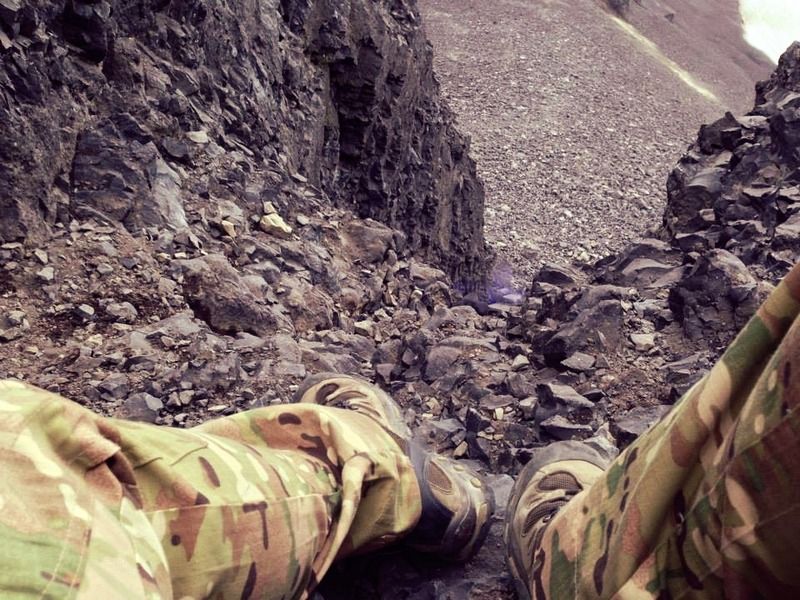 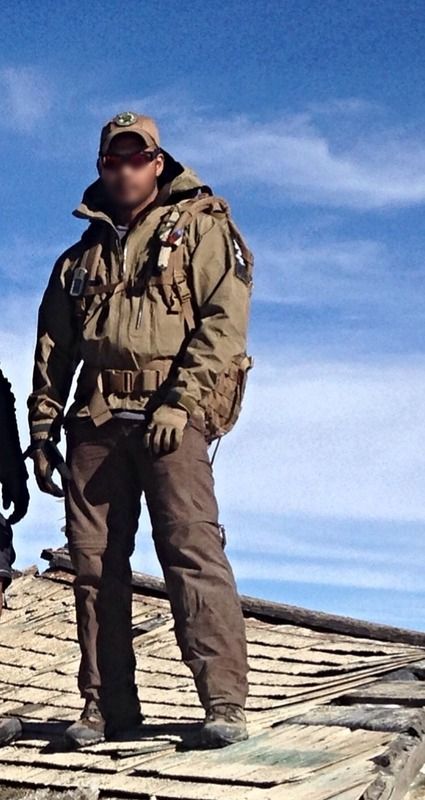 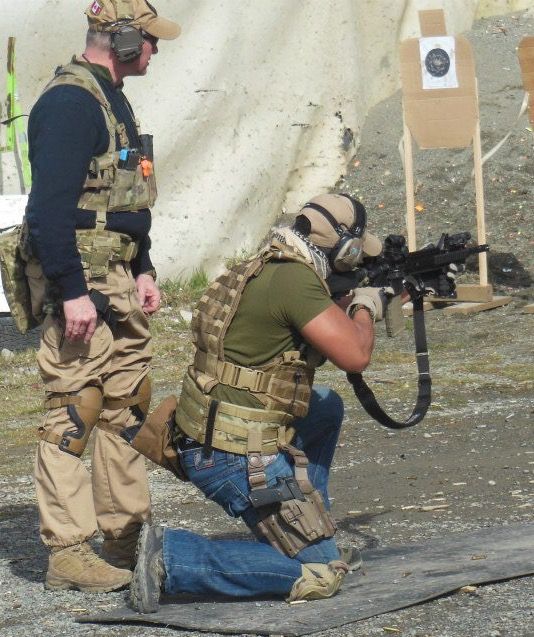 Summary: The Salomon Quest 4D GTX Forces boots are a very light but very hardy boot that provides both comfort and support in a variety of terrain and protection in nearly any environment. Though Salomon officially describes the Quests as a 3 season boot; I have worn my Quests in high altitude, winter environments with both heavy snow and ice and with their ability to accommodate crampons, I rarely feel the need to switch over to my much heavier, clunkier mountaineering boots. The constant ankle and toe support have come in handy often and have saved me from a few potentially bad spills. There is also something to be said about the feeling knowing that you are ready for anything at all times. I simply cannot say enough great things about the Quest 4D GTXs; they are truly a muti-enviroment, multi-mission boot; whether your AO finds you wading through muddy swamps, hunting the VC in the humid jungles of Asia, taking down Taliban on the rocky crags of the Hindu Kush, or simply fighting off mobs of menopausal soccer moms in the urban jungles of your favorite shopping mall these boots provide you with both function and style. Backed by Salomon’s quality guarantee and customer support you can feel confident that you will always be in good hands. **the durability and longevity observations were based on the performance of the green 2011 version of the Salomon 4D Quest GTX over a period of 4.5 years*** For more reviews and to read the original article and see all the photos please ‘like’ us on facebook: https://www.facebook.com/SPEARtacdevgru Salomon USA 1 800 875 2619 http://www.salomon.com/us/ Salomon Canada http://www.salomon.com/caus/ AMERSports http://www.amersports.com/ Konepajankuja 6, P.O. Box 1000 00511 Helsinki Finland Phone +358 20 712 2500 / amer.communications(AT) http://www.salomon.com/caus/care.html Care Recommendations: General care: After each use of the product it is recommended that you remove all dirt and mud from the shoes using a soft, wet brush and clean water. Shoes should never be cleaned in a washing machine. Shoes should be dried at room temperature without the aid of an external heat source including the sun. Leather materials: To prevent the natural aging (cracking, stiffening, decrease of waterproofness) of leather and leather lined products Salomon® recommends treating all leather products with a cream or water based wax treatment such as Nikwax®. Please note that leather treatments may alter the leather’s original appearance however it will not affect the performance or properties of the leather. Textile materials: To extend the life of the textile and fabric on the products they should be cleaned on a regular basis following the same care instructions mentioned above. Reinforcement materials: Certain Salomon® shoes are built using reinforced materials in high abrasion areas. These areas may change in appearance over the life of the product however it will not affect the shoe’s performance or properties. Lining materials: It is recommended that the lining of the products be cleaned periodically in order to prevent odor build up and to extend the life of the product. Salomon® recommends always wearing socks in order to keep the lining durable and odor free. Salomon’s® sock liners contribute to the comfort and cleanliness of it’s products. The sock liners should to be machine washed using warm water on a regular basis and replaced when necessary. Laces: Laces have the potential to become damaged over the life of the product and should be replaced when necessary. Soles: The cushioned midsoles should be kept clean and free of dirt and mud to prevent bacteria build up and premature ageing.
__________________
Last edited by rockafella; April 21st, 2015 at 16:52.. |
|
|
|

|
|
|
#2 |
|
These are definitely great boots (I have the quest 4D GTX brown/grey). I'm a multiday backpacker as well and these were the boots I chose. I went for the best boots I could get period, price not a factor and these have been the best boots I've ever had.
I have high arches though so I went with heat moldable SOLE inserts which also have the anti-bacterial built in to them. Best insoles I've ever tried (I've tried a lot) and at $50 they aren't cheap but well worth it. They come in difference thicknesses for personal preference. For hiking I use a thicker insole for more cushioning. |
|
|
|

|
|
|
#3 |
|
Good to know way lander, thanks for share information your input!
__________________
|
|
|
|

|
|
|
#4 |
|
Now THAT is a review. Well done, thanks.
|
|
|
|

|
|
|
#5 |
|
ksuechuc
|
Too bad the Salomon stores in Canada won't carry the Forces line...even their flagship store has had a bunch of ETF guys trying everything to get them with no luck...
__________________
|
|
|

|
|
|
#6 |
|
Dstactical has them
__________________
Love and Tolerance Coffee, what purpose does these serve? А ну, чики-брики и в дамки! За Родину! BRRRRRT! |
|
|
|

|
|
|
#7 |
|
DS tactical Only the asphalt ones at the moment though. ETA on the Navajo ones are unknown. Millbrook Tactical and Tactical Products Canada had them in both colors.
__________________
Last edited by rockafella; April 22nd, 2015 at 14:12.. |
|
|
|

|
|
|
#8 |
|
Any word on GTX navajo in Canada? Millbrook has them in navajo - just not GTX. Should I spring for the ones without GTX or wait. Decisions.
__________________
 |
|
|
|

|
|
|
#9 |
|
Which colour is most suitable with the crye precision multicam pants? And also I have size 9.5 feet, so does this mean I should get a size 8 for this boot or is it subjective? I don't hike much other than doing the grouse grind so I don't exactly know how/what to look for in sizing when it comes to hking boots.(I usually wear size 10-10.5 for regular shoes)
|
|
|
|

|
|
|
#10 |
|
Boots that you wear all day in uneven terrain should fit perfectly while wearing the correct socks. you want every little movement as that's a cause of blisters. Best way is to actually try them on and wear them around the store for a bit. These are expensive boots and you'll be wearing them all day so the extra effort is required.
|
|
|
|

|
|
|
#11 |
|
Thanks! So that means there shouldn't be any movements unlike regular shoes eh? (Which generally has a lil bit of toe room)
And BTW what colors do the SOF wear for the quest? |
|
|
|

|
|
|
#12 | |
|
2tall2brawl
|
Quote:
|
|
|
|

|
  |
|
||||||
| Bookmarks |
| Thread Tools | |
|
|
 |